16 ways to have a sustainable Christmas
Being kinder to the planet and the people who live on it is a firm focus for Etch. To help the Etch team and the Etch community foster more environmentally friendly ways of living, we spent time discussing the many ways (from super simple to a bit more thought-out and planned) to have a more sustainable Christmas. And as it's the season of giving, we're letting you in on the action too. Here are just some ways we're encouraging our team and community to have a more sustainable Christmas. Happy holidays and see you all in 2022!
1. Think about the circular economy
Traditional linear product flows contribute to greater waste. But there is a better way. New regenerative business model thinking emphasises returning, reusing, recycling or repairing through a more circular design economy. And the circular economy is based on three principles:
- Designing out waste and pollution
- Keeping products and materials in use at the highest possible value
- Regenerating natural systems
2. Shop local
Firstly, shopping local is a great way to support independent businesses and charities that may have struggled since the pandemic. In doing so, you’ll be supporting your local community and economy, and as a result, helping to create demand for local jobs.
From a carbon footprint perspective, walking or cycling to your local shops is always better for the environment than driving to out of town shopping centres or ordering online. And there is a greater chance that the goods have been sourced locally and sustainably. Some tips on finding local suppliers - Google local craft or Christmas fairs. Check out Facebook marketplace for independent sellers and Instagram for small local businesses.
3. Gift sustainably
This year, try to be more eco-thoughtful with your choice of gifts. Choose eco-gifts that reduce our reliance on single-use plastics. These products are beautifully packaged and can make great gifts for people starting on their own eco-journey. And don’t always go cheap, especially on gadgets or electronics - buy products with a more extended UK guarantee, designed to last or be serviceable. Think quality over quantity. And don’t be fooled by companies who say they are doing more to protect the environment than it is, known as greenwashing. Please do your research on the company and make sure they have a policy for sustainability or being more environmentally friendly.

4. To use Amazon or not?
Consumers should make up their minds if they want to use Amazon or not. Whilst deliveries from the other side of the world will have a significant impact on your carbon footprint, Amazon promotes small local businesses allowing them to enter the supply chain and compete in a global marketplace. So, if you’re using Amazon, be sure to check from where your deliveries are coming. And they do give back too; smile.amazon.co.uk is a similar concept to easyfundraising.com, where customers can experience ‘feel-good shopping’ - raising money when you shop online (at no extra cost to you) for good causes.
5. Children’s toys alternatives
So many children’s toys are made of plastic. When it comes to children’s toys, where possible, opt for wooden ones – there are some great affordable ones from budget supermarkets. And don’t always rely on the large retailers. Check out charity shops, car boot sales or anywhere where children’s toys may still be in circulation, rather than buying new. This is great for board games. And always keep the cardboard boxes – children often find them more interesting than the toy – and they’re great to build forts, houses or even robots.
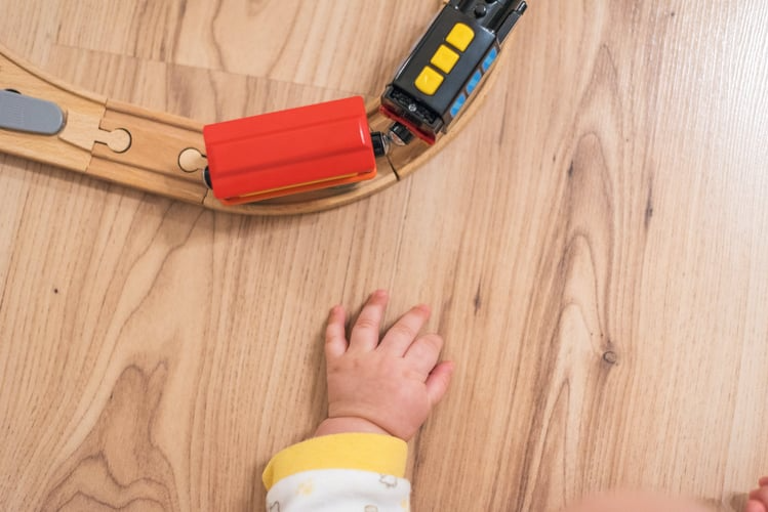
6. Buy eco-friendly clothes this Christmas
The fashion industry is notoriously bad for sustainability and being environmentally friendly, but there are ways to help. When choosing clothing as a gift, think about from whom you’re buying. Are they ethical and sustainable brands? Do they have policies in place for things like workers’ rights (across the whole supply chain), a minimum living wage, use of resources and energy, little or n use of animal products? Most ethical brands are very clear in their mission to positively impact the environment and anything that lives on it. And whilst there are hundreds of ethical clothing brands (BEEN London, Mother of Pearl, COSSAC, Elvis & Kresse and Wire to name but a few), they can be expensive.
So, if you want to save the pounds, what else can you do?
- Reuse – Don’t simply bin old clothing; if it’s seasonal, pop it into storage and get it out next year.
- Shop - in charity shops – and not just for the odd item but all clothes. There are some great finds, and it’s a lot cheaper too.
- Swap – clothes with friends and family - use Facebook Groups and local communities to organise.
- Sell – Instead of binning, why not sell them on eBay or Vinted.
- Donate – and if you really want to get rid of your clothes, always donate them to a charity shop or clothes bank
7. Try to get it right-first-time
Buying gifts for people can be tricky, and thanks to free returns, we’ve become accustomed to buying, trying, and returning at the click of a button. But doing so has a significant impact on the environment and your carbon footprint. There are ways to avoid falling into the returns trap. To help get it right first-time, create and share lists with family members and friends. Or, for the more creative, use a Pinterest board to pin the products you’d like and share this with loved ones instead. Not only will it be better for the environment, but you’ll prevent getting terrible gifts that you never use or want.
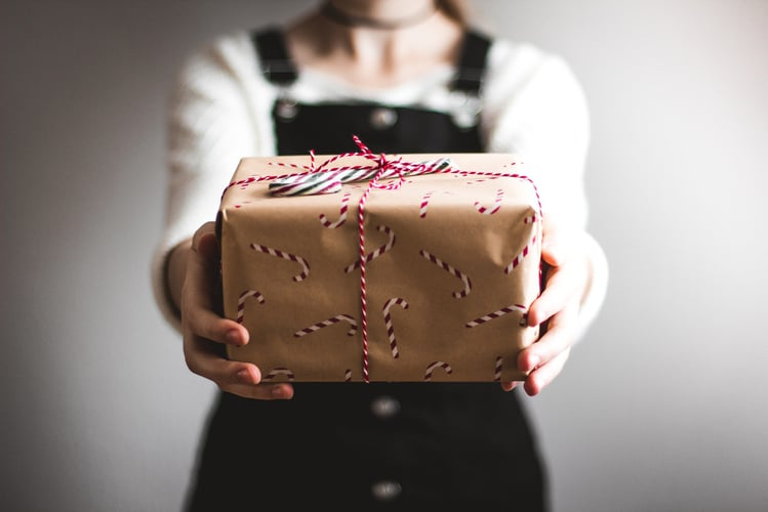
8. Think about your gift wrapping
Traditional wrapping paper with glitter, glue, metallic textures and waxy coats is awful for the environment. Most councils won’t let you recycle it either, so you can’t repurpose it. If you opt for wrapping paper, ensure it’s sourced responsibly (look for the FSC or PEFC logos). But there are some great alternatives that aren’t brown kraft paper! Use tissue paper or recycle the nice paper from previous years. There's also reusable wrapping paper, like fabric bags or turning old clothes and materials into bags for gifting. Reuse Christmas cards as gift tags and look to use plant-based or recyclable sticky tape or string to tie everything together. Or why not go the whole hog and wrap your presents in eco-friendly materials with no need for tape or ribbons – or as the Japanese call it, Furoshiki.
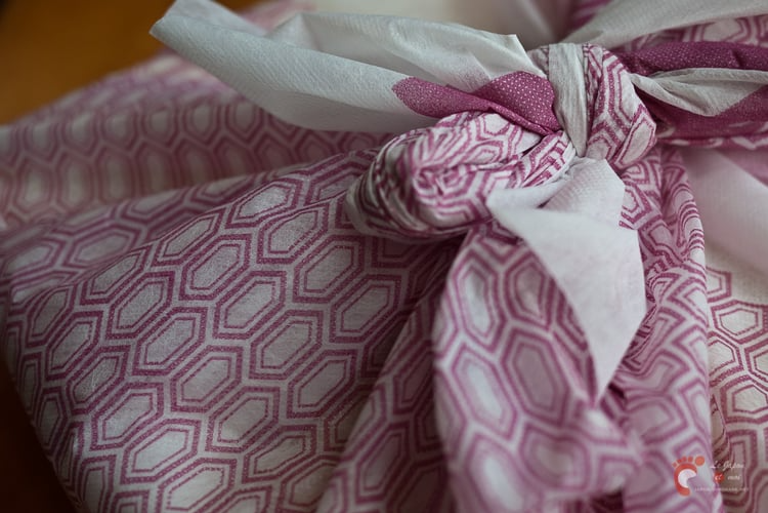
9. What about Christmas cards?
Think about the number of cards you send and receive every year. We bet it's a lot. And you can't recycle all cards; like with wrapping paper, if there's glitter, glue or plastic, it can't go in the recycling bin. So consider some alternatives. At Etch we ditched Birthday cards since the pandemic, opting for digital eCards instead. In that time, we have stopped upwards of 80 cards from entering circulation. Even recyclable ones take considerable time and energy to produce and reuse. Another alternative is plantable cards. Each design is printed on seeded paper (with lots of different seed options available); after use, simply plant the card and watch your seeds grow.
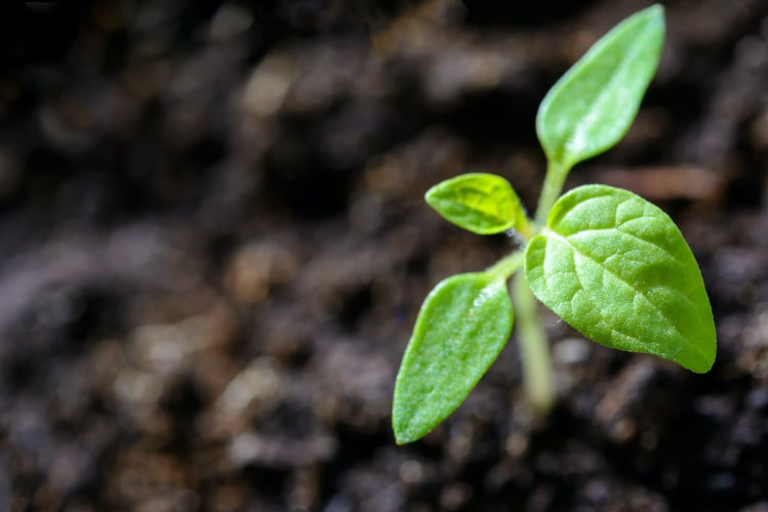
10. Know your recycling rules
Wrapping paper and cards
As mentioned, you can't recycle wrapping paper and Christmas cards with glitter, glue and sticky tape attached. However, you can recycle some wrapping paper (if it does not contain the materials mentioned above or is made of any waxy or plastic material. Always do a scrunch test; if it stays scrunched, it's usually good to recycle.
Carboard
Cardboard packaging can be squashed flat and recycled in the main part of the recycling bin. Ensure it doesn't have any tape or plastic attached.
Christmas trees
When it comes to Christmas trees, if you have a real one, be sure to use your local council's collection service after Christmas. Alternatively, dispose of your tree at your local recycling centre. Or avoid driving anywhere and mulch your tree down, ready for composting.
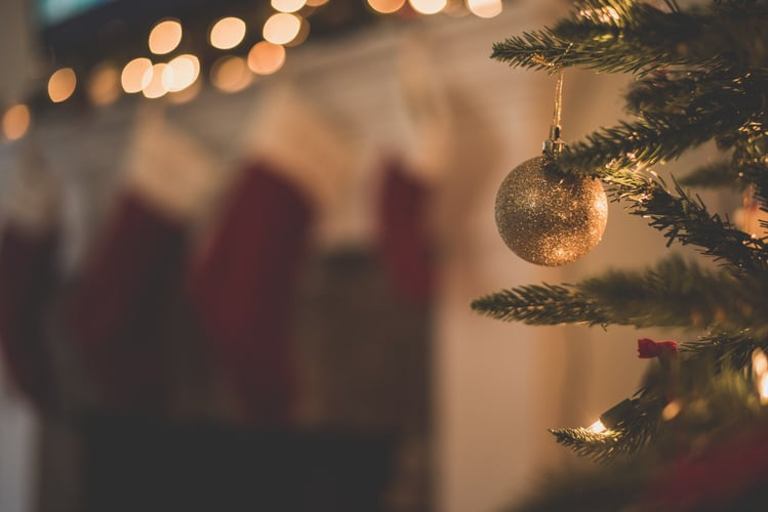
11. Choose eco-friendly Christmas trees
Is it more eco-friendly to use a fake or real tree? Researchers have found that real Christmas trees have a smaller carbon footprint and are better for the environment than fake ones. According to Recycle Now, fake trees are made from various materials and therefore cannot be recycled. However, if you opt for artificial trees, make sure you buy one that you can reuse every year.
But the carbon footprint of a real Christmas tree grows tremendously with transportation, so a tree grown on the other side of the world isn’t at all a sustainable choice. For future Christmases, the Royal Horticultural Society encourages buyers to ask their supplier where the trees come from and choose a locally sourced and grown tree, or one that has at least been grown in the UK rather than abroad.
Finally, a very eco-friendly way is to rent a real tree. After it’s been delivered and loved in your home during Christmas, it is then picked up and replanted for the following year.

12. Use sustainable Christmas decorations
Just like wrapping paper and cards, you can’t recycle some decorations. If you’re buying new ones, stick to timeless pieces and avoid trends, which you’ll end up throwing away only to buy new ones the following year. If you need to dispose of decorations, schools and playgroups usually use these for crafts. And charities such as Scratch welcome good quality decorations that they pass onto those recently rehomed. There are also second-hand initiatives like ReUsers which has stores that sell Christmas decorations.
Making your decorations is very eco-friendly. Visit scrap stores for offcuts of paper, fabric, ribbons and various craft supplies. Go foraging for evergreen foliage to use on wreaths and arrangements, start collecting and drying in the Autumn. Use biodegradable materials that can you can compost after use. Dry out citrus slices and make decorations using cinnamon sticks, rosemary sprigs. Driftwood makes for great mobiles and hangings to display your cards, and drilled shells threaded with recycled ribbon make for pretty trinkets.
Look to recycle or reuse decorations where possible. Turn old clothes and materials into decorations (and fill them with lavender so you can use them in drawers after Christmas). Use old sweet and chocolate tins to plant flowers come spring. And use old jars for lighting displays or use for candles.
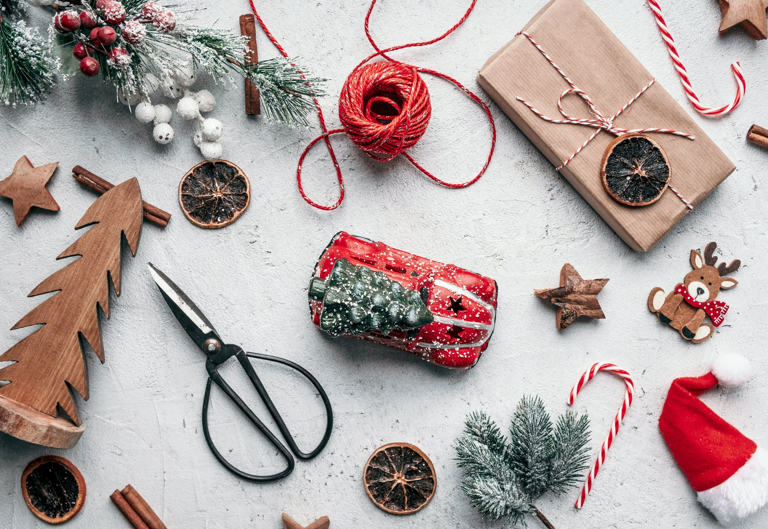
13. Think about your technology this Christmas
Speaking of lighting decorations, always ensure you’re using LED lights. Use time switches or smart home sockets to ensure lights and other electrical equipment are switched off when you’re not using them. If you’re hosting, pre-empt where there may be busy rooms that may generate a lot of heat, so not to leave the heating on if it’s not needed. When washing up, if using a dishwasher, always use the eco-mode.
Avoid buying where possible waste electrical and electronic equipment (WEEE). If an item is faulty, can the item be repaired rather than bought new? If you can’t, use a service like Men’s Shed. Or donate for re-use, e.g., Facebook Marketplace or charity shops. And Curry’s or PC World will always take in old electronic equipment as part of their own SDG goals.
Finally, when it comes to batteries, use rechargeable ones where possible. Never throw them away in the general waste because you can usually recycle these in shops, supermarkets or even curbside collections.
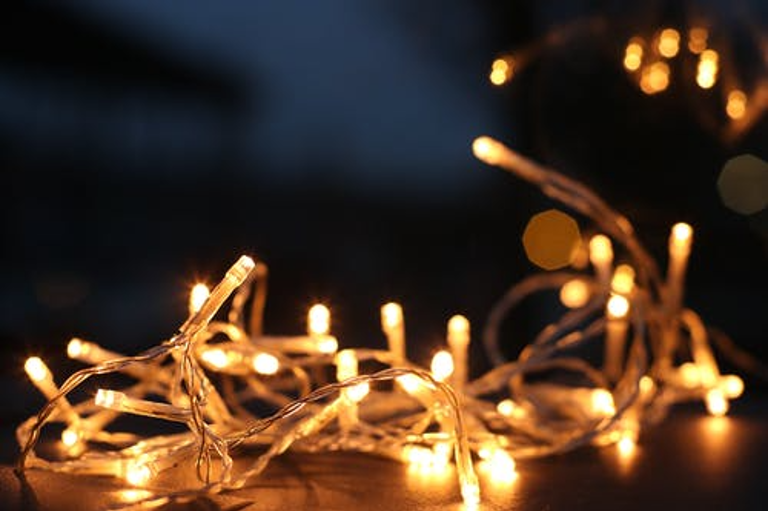
14. Feast sustainably
We waste a lot of food. The UK throws away approximately 270,000 tonnes each year (that’s food that simply doesn’t get eaten), and a disproportionate amount if that is at Christmas time.
Eating less meat is better for the planet, but consider where your vegetables are coming from. Buy seasonal, buy local. Invest in an organic turkey, which creates a lot less carbon. Don’t throw leftovers into the bin (eat it, freeze it, turn it into bubble and squeak, or see if a local shelter will take in the food. For peelings, compost it or get a food bin from your local council.
Try a plant-based Christmas dinner (less meat is better for your carbon footprint and general health). The following are just some recipes we would recommend if you’re thinking of having a plant-based Christmas dinner:
- Vegan Wellington
- Beet Wellington
- Ottolenghi’s Brussel sprouts
- Honey-glazed carrots
- Honey roast parsnips
And for those daring enough for vegan cheese, we highly recommend checking out I Am Nut Okay.
When it comes to tableware, always go natural, like eco-friendly candles. And whilst washing up is a drag (for those who don’t own a dishwasher), it’s always better than using single-use plastic.
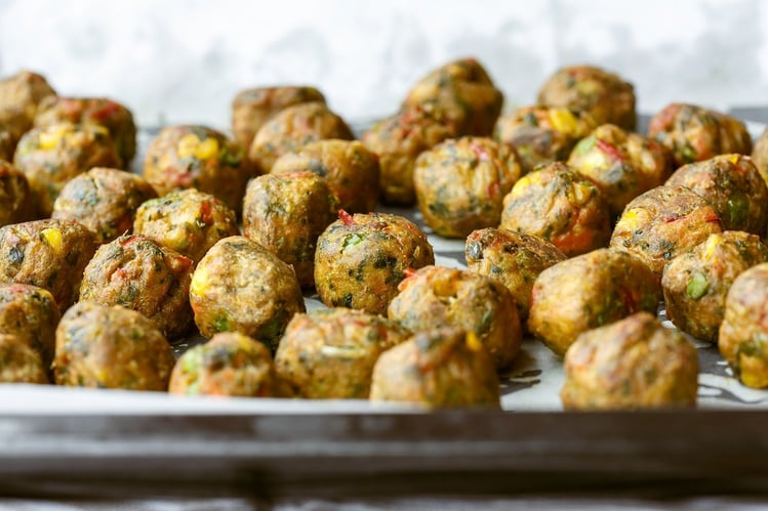
15. Choose environmentally-friendly outdoor activities
Try to get outdoors when you can. It’ll not only make you feel more Christmassy, but it’s good for your health too. And there are ways to do this sustainable too:
- Try foraging – an excellent way to collect your future decorations, as previously mentioned.
- Stargaze on a cold a crispy night (maybe even a late-night picnic if you’re daring)
- Try a scavenger hunt instead of opening up presents inside.
- Always check out local events and outdoor attractions.
- Try a bit of carol singing.
- The all-important Christmas day, boxing day, new years day (or whatever day you want) walk.
- Make it a woodland walk and feed your soul.
- Try a bit of volunteering this festive period with a local charity.
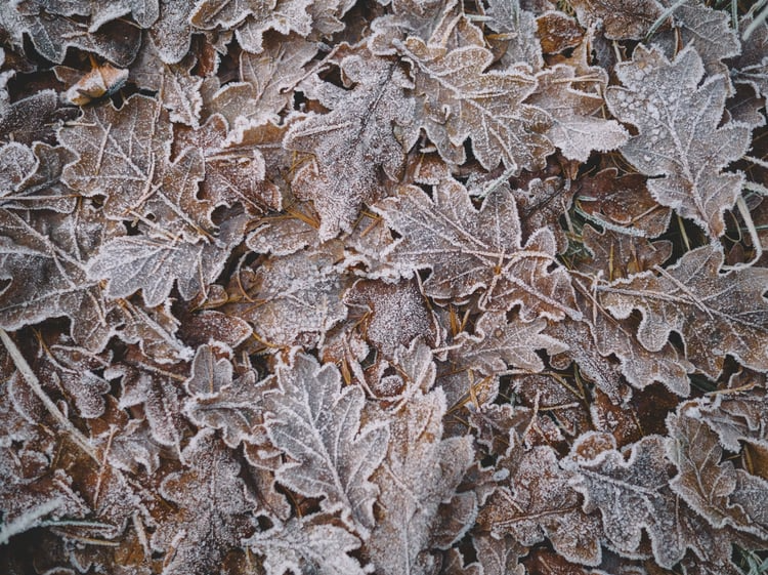
16. Enjoy deliberate living
Take the time to focus on the experience of being alive rather than concentrating on doing, e.g., spending time interacting with human beings, such as spending quality time with loved ones. It's all about simplifying your life by going back to traditional ways and living a more balanced, purposeful life. The ways to achieve this range, e.g., from visiting friends and family, and spending time together playing games, and talking. And take some time for yourself too, read a book, zone out by sewing or doing arts and crafts. Or give back by signing up to a local charity like a homeless shelter.

These are just some of the ideas we discussed with the Etch team on having a more sustainable Christmas. As part of Etch’s ongoing commitment to be more sustainable, we’ve recommended the tips mentioned above as a way of being kinder to the planet and the people who live on it. For more information about Etch’s sustainability efforts, please read our policy in more detail.

